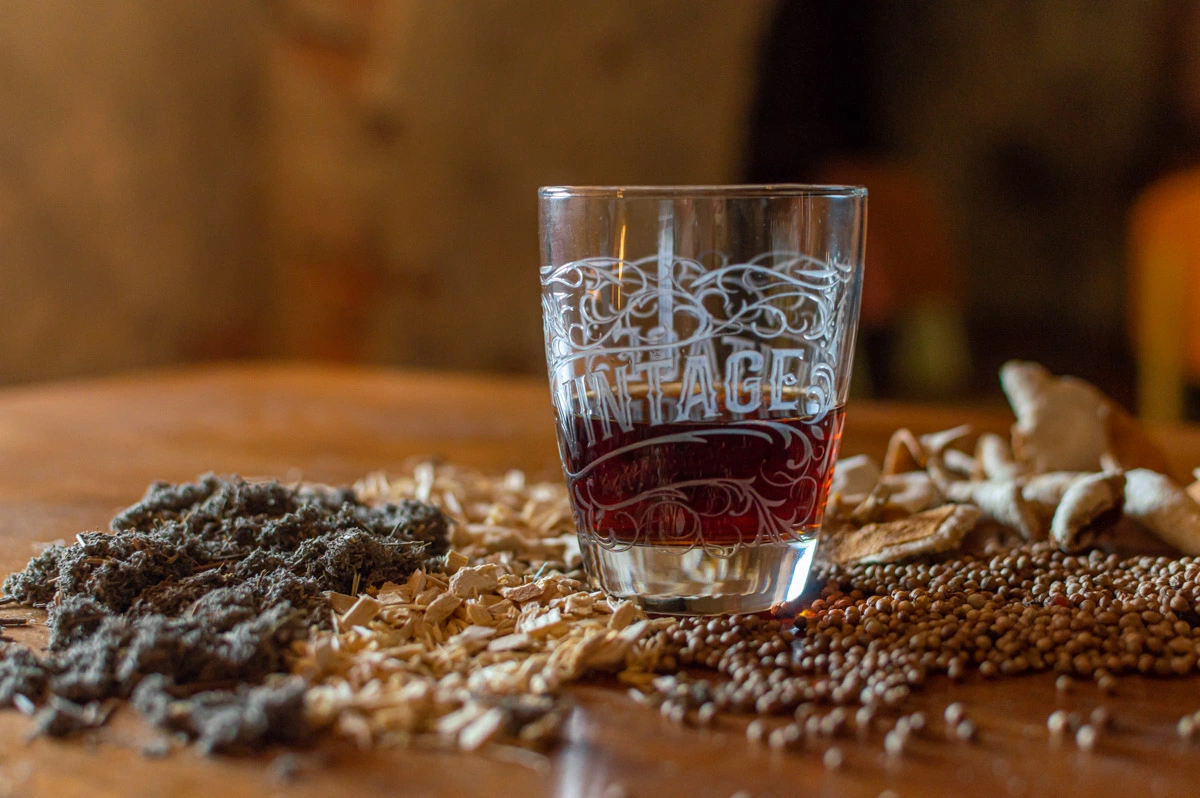Vermouth: history, innovation... and beer!

Its name speaks of past times, of something that comes from afar: vermouth. And it’s true: the ancestors of this product - a fortified wine made with an alcohol infusion of herbs and spices - are lost in the mists of time. Suffice it to think of the fortified wines with herbs, fruit and spices drunk by the Greeks and the Romans. The famous Hippocratic wines, from the name of the famous Greek doctor. They were mainly medicinal wines, where the alcohol served as a solvent for herbs and medical preparations. In the Middle Ages, Arnaldo da Villanova fortifies Moscato for the first time, possibly for religious reasons, trying to improve the shelf life of the wines used during Mass. The foundations have been laid: a wine fortified with alcohol and flavored with a mix of herbs and spices. But it still takes many years before vermouth is born.
SUBSCRIBE TO BALADIN NEWSLETTER
Between the 18th and 19th century
“A B. Carpano. In 1786, in this house, he created his vermouth. The first in a typical and traditional industry that has contributed greatly to the fame and prestige of Turin in the world”. These are the words on a headstone between via Viotti and piazza Castello, in the center of Turin, dedicated to the inventor of vermouth: Benedetto Carpano. Vermouth is developed at the end of the 18th century, thanks to a number of favorable conditions in the Savoy capital: the first was the availability of herbs and spices - some from Piedmont, the most exotic ones from the nearby port of Genova. Second, the presence of Moscato grapes, a very aromatic indigenous grape variety with a high sugar content: the keystone of vermouth. Finally, the genius of Antonio Benedetto Carpano who, in 1786, was a shop boy in his early twenties working for the Marendazzo liquor and wine store in piazza Castello, then called piazza delle Fiere.
Vermouth was an immediate success, so much so that the store was converted into a 24-hour bar to meet the demands of customers. Until 1912 only one amber colored variety was available on the market. That year, Gancia developed the white version, with a flowery character given by rose petals and elderberry flowers. Over the years, the amber version took on more bitter and complex notes to stand out. The generous addition of spices, woods and barks gave birth to red vermouth. What about the dry version, made famous by the Martini Cocktail? We need to go to France, to Marsellain in Occitania, where in 1813 Joseph Noilly, the known village herbalist and pharmacist, perfected his white and dry Noilly Prat.
Vermut, vermouth, vermuth, vermutte: the origin of the name
The name of this product comes from German wermut, which means mugwort, or absinthe, the herb that characterizes it. Apparently, the name was given by Carpano himself, who wanted to celebrate his passion for Goethe. But there may be a more subtle reason related to the Savoy House, who was keen on demonstrating a its descent from king Otto II of Saxony. Giving a German sounding name to a product that was a symbol of Piedmont meant further stating the connection to Germany. As for its spelling, the reference is the “Monografia sul Vermouth di Torino”: a monography on vermouth written by Arnaldo Strucchi in 1907, the first who systematically coded this product. Since then, vermouth is the most common way of writing the name of this drink.
What is happening today?
Vermouth is enjoying a second life and is entering new places where it is consumed both on its own and as an ingredient for cocktails. The credit goes to its contemporaneity: it is aromatic and complex, yet always enjoyable. Its alcohol content is not excessive and fits perfectly with the current trend of low alcohol cocktails. In recent years, we have seen the labels available on the market multiply: along the big producers from Piedmont who have made the history of vermouth, we can also find smaller firms who have created unique and peculiar products. After a long process, the Istituto del Vermouth di Torino (the Turin Vermouth Institute) was finally created in 2017 to enhance, promote and improve the quality of this product, a symbol of Italian taste in the world.
What’s new… Beermouth
Beermouth takes inspiration form the world of vermouth, but is a unique take on it. It was created by Baladin in 2018, when nothing of the kind existed on the market. It is a completely new product created by combining a beer with a strong personality and character such as Xyauyù - the ultimate “couch beer” - with a mix of 13 botanicals traditionally used in the fortified wine from Piedmont, using innovative extractions techniques (ultrasounds and low-temperature vacuum distillation) to preserve their fragrant aromas. Beermouth is characterized by its amber color, and scents of spices with moderately balsamic notes. The taste is elegant and well balanced, with a touch of citrus, and a persistent and pleasantly acidic finish. It is excellent on its own, at the end of a meal or in mixology. A blend of passions which has laid the foundations for a new way of thinking of beer and creating excellent drinks in the world of mixology.



